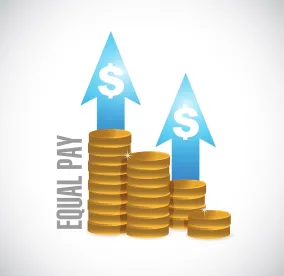As anticipated, the EEOC has released updates to its proposed rule obligating certain employers and federal contractors who file annual EEO-1 reports to include employee pay data information in addition to already-required employee demographic data.
While the updated proposed rule would require the collection and reporting of the same general pay data information as initially proposed, the updated rule:
-
extends the due date for the first EEO-1 report to require this additional data from September 30, 2017 to March 31, 2018;
-
aims to simplify data collection by establishing a calendar year wage calculation period and moving the “workforce snapshot” period for purposes of counting employees to a pay period of the employer’s choice between October 1 and December 31 of the reporting year; and
-
provides guidance on reporting hours worked for exempt employees.
 The updated proposed rule is subject to a 30-day comment period ending on August 15, 2016.
The updated proposed rule is subject to a 30-day comment period ending on August 15, 2016.
As previously reported, in February 2016, the EEOC published its initial proposed rule requiring covered employers to report information regarding employee pay ranges and hours worked. Under the proposed rule, employers with 100 or more employees would be required to report the number of employees falling into each of twelve newly created “pay bands” utilizing employees’ earnings information, as well as the total number of hours worked by employees in each band.
Based on comments received following publication of the initial proposed rule, the updated rule revises the due date for the first expanded EEO-1 report to March 31, 2018. In turn, employers would be allowed to utilize end-of-year W-2 Box 1 income reporting for purposes of EEO-1 wage reporting, so as not to require a special income calculation for purposes of the EEO-1. Each subsequent EEO-1 report would be due on March 31 of the year that follows the reporting year, with wage information based on employees’ W-2 income in the prior year. The 2016 EEO-1 reporting deadline of September 30, 2016 for the currently approved EEO-1 remains unchanged.
The updated rule would also move the “workforce snapshot” period for counting the total number of employees to be reported to a pay period in the fourth quarter of the calendar year, or between October 1 and December 31. This is a change from the initial proposed rule, which would have continued to require employers to count employees by utilizing a pay period between July 1 and September 30 of the reporting year. (The July 1 through September 30 snapshot period remains in effect for the 2016 report.) This change is intended to further align employers’ information gathering obligations under the EEO-1 with those already required for W-2 purposes.
As to reporting hours worked, an outstanding question under the initial proposed rule was the method employers should use to report hours worked for employees who are exempt under the Fair Labor Standards Act. The updated rule states that, for exempt employees, employers would have the option to either: (i) report 40 hours per week for full-time exempt employees, and 20 hours per week for part-time exempt employees, multiplied by the number of weeks these individuals were employed during the EEO-1 reporting year; or (ii) provide actual hours worked by exempt employees during the EEO-1 reporting year, if the employer already maintains accurate records of these hours.
The EEOC has also issued a question and answer document on the proposed revisions, along with a fact sheet for small businesses.
Employers may submit comments to the updated proposed rule by no later than August 15, 2016:
-
Online at regulations.gov;
-
Via hard copy to: Bernadette Wilson, Acting Executive Officer, EEOC, 131 M Street, NE, Washington, DC, 20507; or
-
Via fax (6 pages or less) at: 202-663-4114.



 />i
/>i

